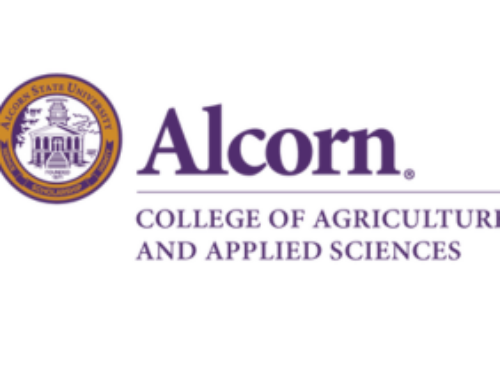Alcorn State University scientists discover effect of purslane in swine production
Alcorn State University scientists discover effect of purslane in swine production
Research scientists at Alcorn State University Swine Development Center in Church Hill, Mississippi, recently reported that adding purslane leaves to swine diets lowers bad cholesterol while increasing the good cholesterol in growing pigs.
“The data generated showed that back fat measurements taken from pigs given a purslane diet plus added cholesterol had 50% less fat than those consuming the same diet, but without purslane,” said Dr. Michael Ezekwe, nutritionist and director of Swine Development Center. “The purslane fed pigs also deposited 40% less fat than control pigs whose diet contained no cholesterol or purslane.”
This study was published in the December 2011 issue of the Research Journal of Animal Sciences. The article is co-authored by Q. E. Nyoka, an Alcorn State master’s degree graduate, currently working with a Swine Industry group in South Africa; Dr. S. A. Besong, chairperson , Department of Human Ecology, Delaware State University, Dr. Patrick Igbokwe, horticulturist and interim director of the ASU Experiment Station, and Dr. Ezekwe.
“The results reconfirmed the previous findings from our laboratory that purslane leaves lower blood cholesterol and increase beneficial good cholesterol in humans. The significance of the present study is that these effects are readily replicated in pigs given extra cholesterol crystals to simulate high blood cholesterol levels observed in humans with risk of heart disease,” Ezekwe said. “Furthermore, reduction in fat in pigs fed purslane leaves indicates this could provide a means of improving pork quality for human consumption when it comes to reducing the incidence of obesity and coronary heart disease prevalent among Mississippians.”
According to Ezekwe, purslane is eaten extensively in soups and salads throughout the Mediterranean area, where the incidence of heart disease is low. It is even sold in French markets and in some U.S. stores, such as, Walmart as a potted plant. Improved purslane seeds are also available at seed companies and can be grown in pots or gardens. In Russia it is dried and canned for winter use. In Mexico it is called “verdologa” and is a favorite comfort food eaten on an omelet or as a side dish. The uniqueness of purslane is its high content of alpha linolenic acid, a type of omega-3 fatty acid which in the human body may be able to be converted to other related kinds of omega-3 fatty acids (EPA and DHA) found in fish oils. Research has shown that these substances lower blood pressure and cholesterol levels as well as make the blood less likely to form clots.
“Purslane has a rich supply crude protein, antioxidant vitamins and valuable minerals, which can provide an abundance of nutrients for vegetarians. Though it is rarely cultivated as a vegetable crop in the U.S., the wild varieties are seen on farm lands, roadsides and are often used for landscape flowers at public and hotel buildings,” added Dr. Ezekwe.
For more details on the study, contact Dr. Michael Ezekwe at 601-877-3949 or [email protected] .



